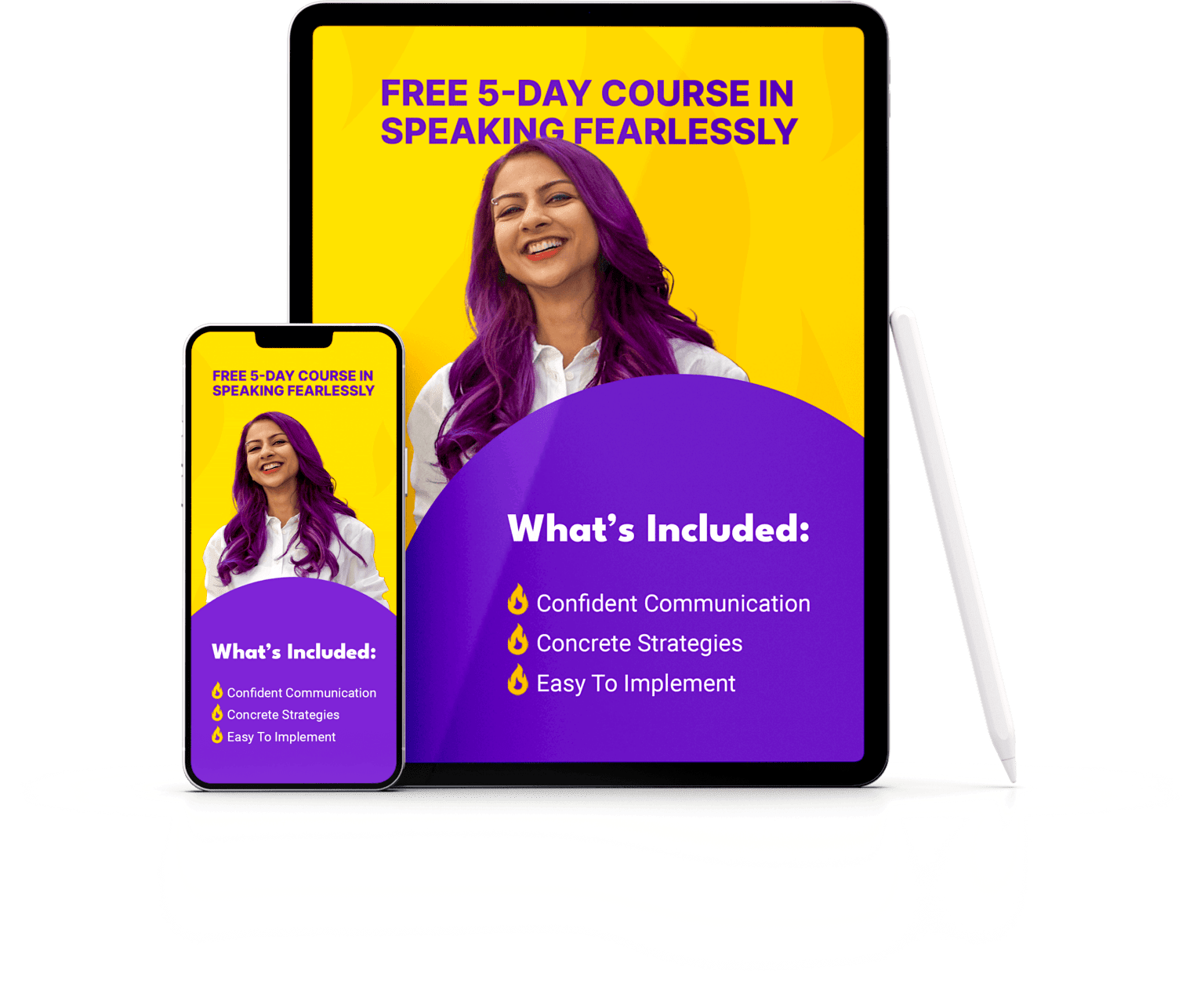Public speaking is a powerful tool for communication, but it’s often plagued by rambling and disorganization. Rambling not only makes your message less clear but also disengages your audience. Whether you’re giving a presentation to your team or delivering a talk at an event, mastering the art of effective speaking is crucial.
In this comprehensive guide, we’ll explore techniques and strategies to help you avoid the rambling and deliver talks and presentations that are concise, coherent, and impactful.
Table of Contents
Section 1: The Pitfalls of Rambling
Before we dive into techniques for streamlining your speaking style, let’s go deeper into why rambling can be detrimental to your message and audience engagement.

- Loss of Clarity:
Rambling often leads to a lack of clarity in your message. When you wander off-topic or go into unnecessary details, your audience may struggle to follow your main points. Your message is likely to get lost. - Decreased Engagement:
Rambling can bore or confuse your audience, leading to decreased engagement. Listeners may lose interest or become distracted when a speech lacks focus and structure. - Loss of Credibility:
Ineffective speaking can damage your credibility as a speaker. An audience may perceive rambling as lack of preparation or expertise.
The worst part is that sometimes you may not even realize that you’re rambling till it’s too late. That’s why we’ll explore techniques to become more self-aware of your rambling and growing into a more concise and impactful speaker.
Section 2: Preparation Is Key
- Clear Objectives and Outlines
Before you begin crafting your talk, or even when you’re improvising a response to a question, take time to identify your key objectives.
What do you want your audience to learn or take away? If you get time, create a clear outline with main points and supporting details. This framework will guide you and help you stay on track during your presentation.
This is undoubtedly more challenging when you’re responding to questions on the spot – but if you get into the habit of pausing, structuring your thoughts and then speaking, you’ll avoid rambling.

- Audience Analysis
Tailor your talk or response to your audience’s needs, expectations and knowledge level.
Don’t talk down to an audience that doesn’t need extra explanation. Don’t use jargon for an audience that doesn’t understand. This understanding will enable you to focus on relevant content and avoid veering off-topic.
- The 45 second speaking exercise
I recommend short speaking exercises for my clients to help them adapt their speaking styles.
The challenge is to explain a single point in 45 seconds. The more you practice with this restriction, the better you’ll become at keeping track of time as you speak. Then, when you’re in the moment, you’ll be aware of how long you’ve spoken for and will be able to pause and breathe instead of going on and on.
Section 3: Techniques for Streamlined Speaking
- Intentional Conciseness
When you practice your talk (and you absolutely should be practicing!), give yourself a time limit.
Your first few practices might go over that limit. That’s when you need to start taking hard calls with your material. Remember – if your audience is lost, it doesn’t matter if you stuff 60 minutes worth of content in 45 minutes. In fact, it works against you to be more detailed, descriptive and inevitably rambly.
Plan for brevity in your talk: Eliminate unnecessary words, phrases, or anecdotes that do not directly support your main points. Be concise, and your message will be more impactful.
- Transitions and Signposts
Use clear transitions and signposts throughout your talk. Preview what you’ll discuss next and recap what you’ve covered. These markers help your audience follow your speech’s flow and structure and help keep you on track instead of spending too long on one point.
Keep it moving along, folks.
- Storytelling
Integrate storytelling into your talk or presentation to illustrate key points. Stories are much more effective than descriptions when it comes to capturing your audience’s attention. Stories also serve to provide real-life examples that make your message more concrete and memorable. However, ensure that your stories are relevant and concise.
Section 4: How to avoid rambling in the moment
- Make an interruption pact with yourself:
Before you start speaking, tell yourself that you’ll catch yourself rambling. Then, when that happens in the moment, pause and regain focus.

- Use the three-bullet rule:
Anchor yourself to a key message. Structure your thoughts around that topic in groups of three. Pause after each key message. This lets the audience keep track of your message and gives you an easy structure to follow when you’re improvising.
- Use meta cognition
Practice metacognition by monitoring your thought processes while speaking. Notice when you go off track. Then, refocus through self-talk.
An example of a refocusing strategy is self-questioning: When you feel the urge to ramble, ask yourself: “Why am I saying this?” Just questioning yourself in the moment will help you stop rambling and get back to the point.
Section 5: Overcoming Nervousness and Anxiety

Nervousness can contribute to rambling. Practice relaxation techniques, deep breathing, and mindfulness to manage anxiety. When you feel more composed, you’re less likely to lose focus and ramble.
Challenge and reframe anxious or unproductive thoughts before starting your talk. This way you’re priming yourself to go into your talk or presentation in a more relaxed and in-control state of mind.
Section 6: Rehearsal and Feedback
- Rehearse
Practice your talk multiple times. Record yourself, or rehearse with a trusted friend or coach.
Pro-tip: Do not rehearse in front of a mirror – it’s not natural and doesn’t let you immerse yourself into the talk completely.
Practice often gets a bad rap – especially with speakers who pride themselves on improvisation. They are often concerned that practicing will make them sound unnatural or robotic.
But ironically, rehearsed talks only sound rehearsed if they haven’t been rehearsed well or enough. And a lot of speakers who improvise end up rambling the most because they haven’t practiced what they were going to say. Strategic practice (with feedback) helps you refine your content and delivery and stay on point and concise.
- Seek Constructive Feedback
Invite feedback from others who can provide constructive criticism. They can help you identify areas where you tend to ramble and suggest improvements. Use this feedback to fine-tune your talk or your speaking style.
Section 7: Handling Unexpected Situations
- Prepare for Questions
Anticipate questions that may arise during or after your talk or presentation. Prepare concise and clear responses to maintain control of your message even during the Q&A session.
- Stay Flexible
If unexpected interruptions or technical issues occur, stay adaptable. Be prepared to shift your focus and continue smoothly. A flexible mindset helps you avoid losing track and rambling under pressure.
Conclusion
Streamlined and effective speaking is a skill that can be developed with practice and dedication.
By preparing thoroughly, practicing conciseness, engaging your audience, managing anxiety, rehearsing, seeking feedback, and staying adaptable, you can overcome the pitfalls of rambling and deliver speeches that are clear, coherent, and impactful.
Remember that mastery of these techniques takes time, so keep refining your skills to become a more confident and influential speaker. If you want to work with an amazing coach who can guide you through this process of overcoming your stage fright, might I recommend myself? Find out how you can work with me and take advantage of my 10,000+ hours on stage and on camera to become a better speaker.



